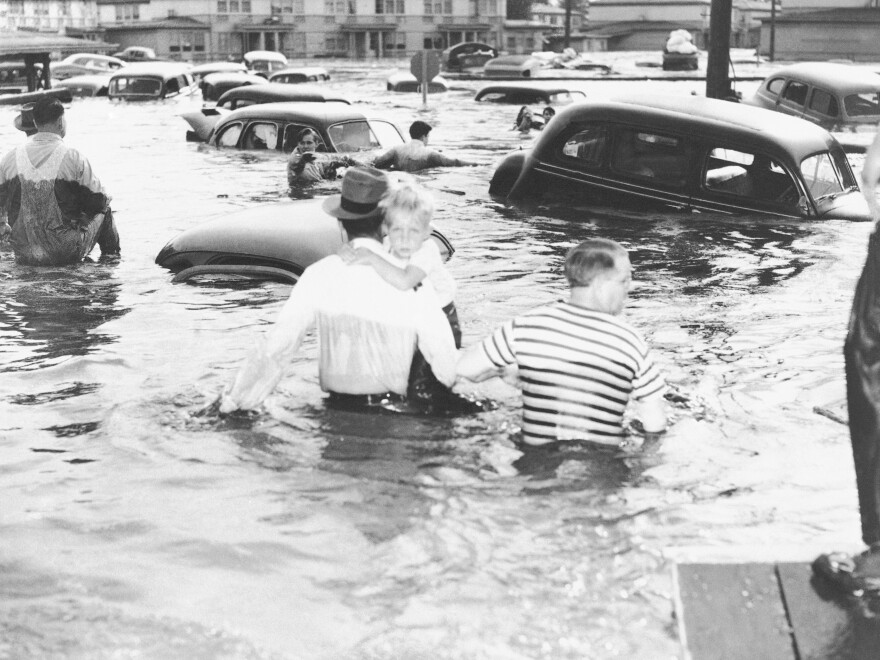Thousands of people crammed into a haphazard housing project, surrounded by a massive river, and secured only by a system of dikes. It was a recipe for disaster, one that saw a growing city reduced to flooded marshlands in less than a day.
In the 1940s, Vanport, Ore. was the center of a booming World War II-era shipyard industry, quickly becoming the second largest city in the state. But both its origin, and its destruction, came about thanks to the racially discriminatory housing practices of neighboring Portland across the river.
As the Smithsonian's Natasha Geiling reports, Oregon's history of racism (it was illegal for blacks to move there until 1926) created a "pristine utopia, where land was plentiful and diversity was scarce." But as World War II saw white males drafted to serve overseas, a labor shortage pulled in a great migration of blacks from the south.

All these new workers needed places to live, which became inconvenient for city officials. At the time, the Albina neighborhood was the only place blacks were legally allowed to live, and it quickly became too small to fit the growing population of African-Americans.
"With Portland's black population undergoing a rapid expansion, city officials could no longer ignore the question of housing: There simply wasn't enough space in the redlined neighborhoods for the incoming black workers, and moreover, providing housing for defense workers was seen as a patriotic duty. But even with the overwhelming influx of workers, Portland's discriminatory housing policies reigned supreme. Fearing that a permanent housing development would encourage black workers to remain in Oregon after the war, the Housing Authority of Portland (HAP) was slow to act."
Vanport was built as a temporary housing solution to Portland's rapidly growing population. At its peak it housed nearly 40,000 residents, close to 40 percent were African-American. But an unusually wet spring in 1948 created a hole in the railroad dike blocking the Columbia River, and it erupted into massive flooding. City officials didn't warn residents of the dangerously high water levels and opted not to evacuate. The town was wiped out within a day and 18,500 families were displaced, more than a third African-American.
The Smithsonian reports that the Vanport's collapse recreated the same overcrowding problem the town was supposed to fix.
Temporarily, the line of racial discrimination in Portland was bridged when white families offered to take in black families displaced by the storm—but before long, the racial lines that existed before the flood hardened yet again. The total number of displaced black residents was roughly equal to the entire population of Albina, making it impossible for displaced black families to crowd into the only areas they were allowed to buy homes.
Today, an 85-acre multipurpose land reserve called Delta Park is Vanport's only remnant. After the flood, discriminatory housing laws meant most African-Americans' only option was to return to Albina. But now the once-predominantly black area is experiencing rapid gentrification, leaving many African-Americans in Oregon struggling to find a place to call home in a state that only let them in 90 years ago.
Smithsonian Magazine has more about the history of Vanport, Ore., and hat tip to Code Switch veteran, Tanvi Misra, for alerting us to the piece.
Copyright 2021 NPR. To see more, visit https://www.npr.org.



